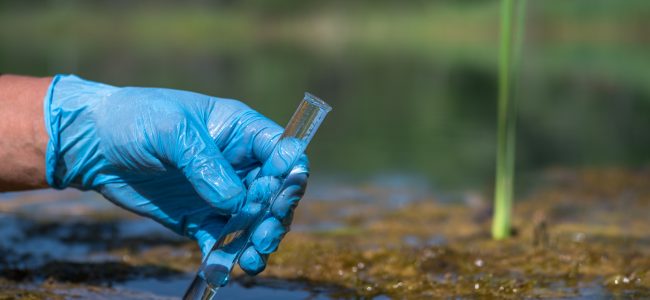BlogLine
U.S. Supreme Court Expands Lands Available For Construction By Limiting The Clean Water Act
6/29/23

By: John L. Kortum
The United States Supreme Court vastly expanded the range of lands available for construction projects in a recent opinion limiting the reach of the Clean Water Act. By interpreting the phrase “waters of the United States” to mean a “surface” connection, rather than, for example, a significant groundwater connection, the Court has narrowed the jurisdiction conferred on the U.S. EPA and the Army Corps of Engineers to control building over wetlands throughout the country.
The Clean Water Act prohibits the discharge of pollutants into “navigable waters,” which is defined as “the waters of the United States.” It is clear that marshes, swamps, estuaries, floodplains and tidal wetlands adjacent to rivers and bays are “waters of the United States.” These ecologically diverse areas help cleanse the water seeping through them and provide extensive habitats for wildlife.
But what exactly the term “waters of the United States” means and how far from rivers and streams such waters go has been the subject of significant jurisprudence, including a string of U.S. Supreme Court opinions that have been as muddy as a mudflat. For example, in the 2006 Rapanos case, four justices of the Supreme Court concluded that “waters of the United States” included wetlands that were so closely connected with rivers and streams that they were indistinguishable from those waters. Four justices urged deference to agency interpretations. And Justice Kennedy opined on his own that jurisdiction under the CWA requires a “significant nexus” between wetlands and navigable waters and that test is met if the wetlands “significantly affect the chemical, physical, and biological integrity” of those waters. As there was no majority opinion, the legal waters were made even muddier. With no clear decision from the Court, the EPA and the Army Corps of Engineers, the federal agencies charged with enforcing the Clean Water Act, adopted a variation of the “significant nexus” test to determine the scope of their jurisdiction.
In the recently issued opinion, Sackett v. Environmental Protection Agency, 598 U.S. —- (2023), the U.S. Supreme rejected the “significant nexus” test and adopted a “continuous surface connection” test. The Court held that “the party asserting jurisdiction over adjacent wetlands to establish ‘first, that the adjacent [body of water constitutes] … “water[s] of the United States,” (i.e., a relatively permanent body of water connected to traditional interstate navigable waters); and second, that the wetland has a continuous surface connection with that water, making it difficult to determine where the “water” ends and the “wetland” begins.’ “
The Court’s interpretation has the effect of dramatically narrowing the scope of the Clean Water Act. The requirement that there be “a continuous surface connection” eliminates jurisdiction based on groundwater flow. As berms, dikes or levees interrupt the surface connection, jurisdiction based on adjacency of wetland to a water of the United States is no long valid. The net effect is that the U.S. EPA and the Army Corps of Engineers cannot assert jurisdiction over wetlands that have been regulated for many decades and so construction projects on those wetlands can proceed.
For more information, contact John Kortum at john.kortum@fmglaw.com or your local FMG attorney.
Share
Save Print